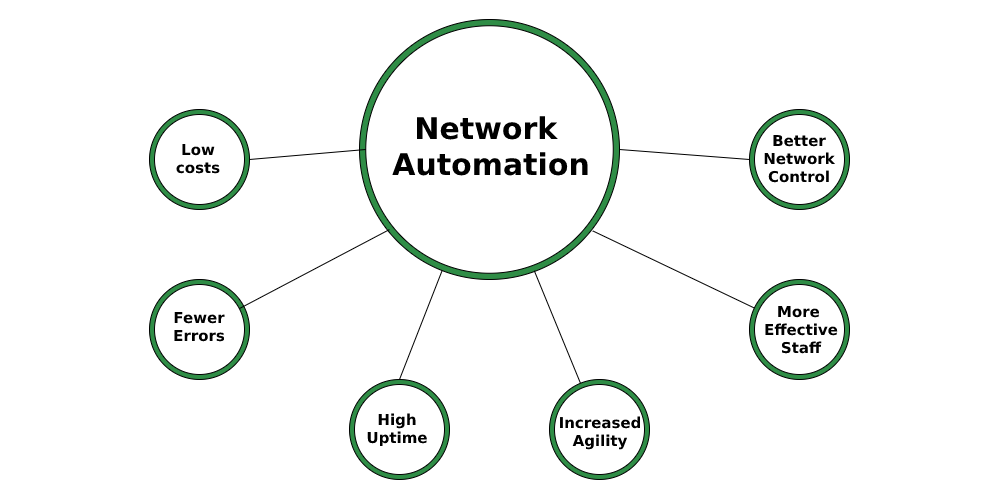
You’re Using ChatGPT Wrong: Try This Underground Prompting Method Instead
Unlock the full potential of ChatGPT with innovative prompting techniques that elevate your conversations and outputs. Learn how to interact with AI like a pro by diving deep into unique and effective methods that go beyond typical usage. This post unveils the underground prompting strategies that can lead to richer, more contextual AI interactions.
Dev Orbit
July 16, 2025
Introduction
In today’s digital ecosystem, LLMs (Large Language Models), especially GPT-5, have made waves for their groundbreaking capabilities. However, many users are still experiencing lackluster results due to common prompting mistakes. If you're merely scraping the surface with generic inquiries, you're missing out on the transformative powers of AI. The promise of GPT-5 is immense—imagine effortlessly generating tailored content, insightful analyses, and creative narratives. In this blog post, we will dissect how to effectively engage with ChatGPT using alternative yet powerful methods that can significantly enhance your interactions.
Understanding How ChatGPT Works
Before diving into advanced prompting strategies, it’s important to grasp the underlying mechanics of ChatGPT:
Contextual Awareness: ChatGPT leverages a wide range of data to interpret context. The richer your prompts, the better the AI can respond.
Token Usage: Each prompt and response are made up of tokens. Knowing how to structure your prompts can save tokens while maximizing output effectiveness.
Conversational Flow: Unlike static queries, ChatGPT thrives on dialogue. It's crucial to design prompts that facilitate this conversational flow.
Let’s explore how to optimize your prompting technique.
The Most Common Mistakes When Prompting
Many users fall prey to a set of recurring mistakes when interacting with ChatGPT:
Generic Prompts: Asking broad questions often yields vague answers. Avoid phrases like “Tell me about…” or “What do you know about…?”
Lack of Details: Insufficient context leads to inadequate responses. Always strive to provide as much relevant information as possible.
Ignoring AI Limitations: Understanding that ChatGPT doesn’t have access to real-time data or early experiences is vital; divergence from this understanding can lead to incorrect expectations.
Recognizing these pitfalls serves as a stepping stone toward adopting effective prompting techniques.
Underground Prompting Methods You Need to Try
Let’s explore some underground prompting methods that can substantially improve your AI interactions.
1. Layered Prompting
This is a technique that involves breaking down complex queries into layers, allowing for a systematic build-up of information. Instead of dumping all your questions into one prompt, you segment them.
Initial Layer: Begin with a broad context; “Describe the impact of AI on modern workplaces.”
Follow-Up Layers: Drill down further; for example, “What specific benefits does AI provide in data analysis?”
This method ensures that ChatGPT captures the essence of the topic incrementally, providing nuanced responses with each layer.
2. Role Playing
Simulating different roles or personas when formulating a prompt can lead to more creative responses. This method effectively sets expectations for how ChatGPT should respond.
Example 1: “As an AI expert, explain how to implement a new AI tool in an organization.”
Example 2: “Assume you’re a skeptical business leader. How would you challenge the benefits of AI adoption?”
Role playing aligns your expectations with the AI's way of processing and helps elicit tailored insights based on context.
3. Narrative Structure
Using a storytelling approach in your prompts can lead to compelling results. By framing your inquiries within a narrative, you can guide the AI more effectively.
Opening: Set the scene; “Imagine a future where AI drives all decision-making processes in a company…”
Conflict Revolution: Pose challenges; “What ethical dilemmas might arise in this scenario?”
Conclusion: Ask the AI to summarize the insights; “What steps can be taken to address these issues?”
This method capitalizes on narrative progression, sharpening the AI's focus on generating cohesive and constructive responses.
4. Using Examples
Incorporating examples into your prompts provides context that can lead to more specific answers. This method is particularly useful when seeking detailed explanations or tailored advice.
Prompting: “Similar to how Netflix utilizes AI algorithms, explain how a small business can personalize its customer experience.”
Contextual Clarity: “Given the TED Talks format, draft a brief guideline on how to present AI advancements to a lay audience.”
By showcasing analogies or parallels, you steer the AI toward responses with greater specificity and relevance.
5. Interactive Dialogue
Encouraging ongoing dialogue can lead to deeper insights. Instead of one-shot prompts, consider structuring your interactions as a back-and-forth exchange.
Initial Query: Begin with a question; “What are the top challenges facing AI developers today?”
Follow-Up: After receiving an answer, prompt for elaboration; “Can you provide examples of how these challenges have impacted project timelines?”
This method simulates an organic conversation, allowing for exploration and expansion of ideas while generating innovative insights.
Bonus/Advanced Tips
While adopting these underground prompting methods, consider these advanced tips to further enhance your efficiency and effectiveness:
Be Precise: Clear and concise prompts are essential. Avoid vague phrases and strive for specificity in your queries.
Iterate and Refine: Don’t hesitate to refine your prompts based on the responses received. Adjust your approach to achieve the intended results.
Research: Stay updated on new features or improvements of ChatGPT to leverage its evolving capabilities.
Practice: Engage with different prompting styles regularly. Like any skill, effective prompting takes practice to master.
By implementing these advanced tips alongside the primary methods, you can command a greater understanding of how to maximize your interaction with ChatGPT.
Conclusion
In summary, engaging with ChatGPT requires a strategic approach to prompting if you want to unlock its full potential. By understanding common mistakes and applying underground prompting methods like layered prompting, role-playing, narrative structures, detailed examples, and interactive dialogue, you're set to elevate the quality of interactions. These methods not only yield better results but also make the experience more engaging and insightful. Don’t forget to share your experiences or insights in the comments below, and let others benefit from your newfound knowledge!

Enjoyed this article?
Subscribe to our newsletter and never miss out on new articles and updates.
More from Dev Orbit

🕵️♂️ Mastering Stealth Web Scraping in 2025: Proxies, Evasion and Real-World Techniques
A 2025 Guide to Evading Bot Detection with Playwright, Proxies and Human-Like Behavior

Why Most People Waste Their AI Prompts ? How to Fix It...
In the current landscape of AI technology, many users struggle with crafting effective prompts. This article explores common pitfalls and offers actionable strategies to unlock the true potential of AI tools like GPT-5.

Redefining Customer Care at Travelgate: Our Journey to AI-Driven Support
In today’s fast-paced world, customer expectations are constantly evolving, making it crucial for companies to adapt their support strategies. At Travelgate, we've embarked on a transformative journey to redefine customer care through advanced AI systems, driven by GPT-5 technology. This article details our experiences, lessons learned, and how AI solutions have revolutionized our customer support while enhancing user satisfaction and operational efficiency.

The Network Evolution: Traditional vs. Automated Infrastructure
Discover the revolution from traditional to automated network infrastructures, learn the benefits, challenges and advanced strategies for seamless transition.

Avoid These Common Node.js Backend Development Mistakes
Introduce the significance of Node.js in backend development and how its popularity has led to an array of common mistakes that developers might overlook.

Tamron 16–30mm F/2.8 Di III VXD G2 for Sony E-Mount Listed for Pre-Order on Amazon US
Discover the latest offering in wide-angle photography with the Tamron 16–30mm F/2.8 Di III VXD G2 lens for Sony E-Mount, now available for pre-order on Amazon US. This article delves deep into its specifications, unique features and its potential impact on your photographic journey. From its advanced optical design to performance benchmarks, we’ll explore everything that makes this lens a must-have for both amateur and professional photographers.
Releted Blogs

Raed Abedalaziz Ramadan: Steering Saudi Investment Toward the Future with AI and Digital Currencies
In an era marked by rapid technological advancements, the intersection of artificial intelligence and digital currencies is reshaping global investment landscapes. Industry leaders like Raed Abedalaziz Ramadan are pioneering efforts to integrate these innovations within Saudi Arabia’s economic framework. This article delves into how AI and digital currencies are being leveraged to position Saudi investments for future success, providing insights, strategies and practical implications for stakeholders.

AI Is Reshaping Jobs — and That Could Hit You Hard
As artificial intelligence continues to evolve, its impact on the job market is growing more profound each day. In this article, we will explore how AI technologies like GPT-5 are transforming various industries, the potential risks for workers, and actionable steps to navigate this changing landscape. From automation to the creation of new job roles, we will offer insights that every professional should be aware of to remain competitive in the era of AI.

I Replaced My To-Do List With an AI Boss — Here’s the Ruthless Truth About My Productivity
In an age where time is a precious commodity, productivity hacks abound but often lead to more confusion than clarity. What if you could replace your cumbersome to-do list with an AI assistant that not only organizes your tasks but also learns from your habits? Enter GPT-5 — an AI that transforms how we approach our daily workloads. In this article, I’ll share my journey of swapping a traditional to-do list for an AI-driven system, detailing the profound impact on my productivity.

Top AI Tools to Skyrocket Your Team’s Productivity in 2025
As we embrace a new era of technology, the reliance on Artificial Intelligence (AI) is becoming paramount for teams aiming for high productivity. This blog will dive into the top-tier AI tools anticipated for 2025, empowering your team to automate mundane tasks, streamline workflows, and unleash their creativity. Read on to discover how these innovations can revolutionize your workplace and maximize efficiency.

GitHub Copilot vs Tabnine (2025): Which AI Assistant is Best?
AI coding assistants are no longer futuristic experiments—they’re becoming essential tools in the modern developer’s workflow. In this review, we’ll compare GitHub Copilot and Tabnine head-to-head in 2025, exploring how each performs in real-world backend coding tasks. From productivity gains to code quality, we’ll answer the burning question: Which AI assistant should you trust with your code?

Temperature, Top-P, Top-K — Explained One More Time
This comprehensive guide delves into the intricacies of temperature, top-p, and top-k parameters in AI language models. Whether you're a developer or researcher, you'll learn how to leverage these settings to improve your model's performance and get the most out of AI-generated content.
Have a story to tell?
Join our community of writers and share your insights with the world.
Start Writing